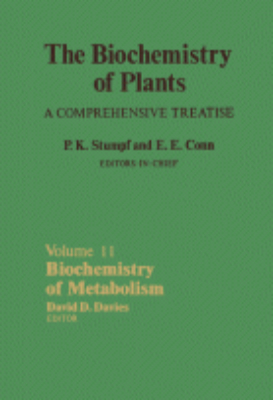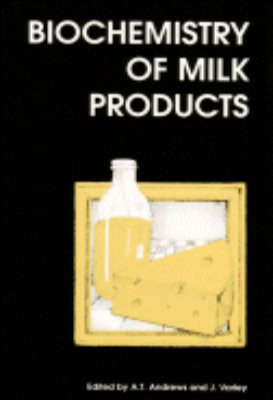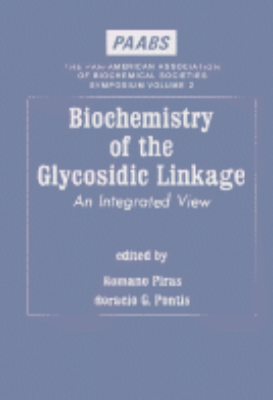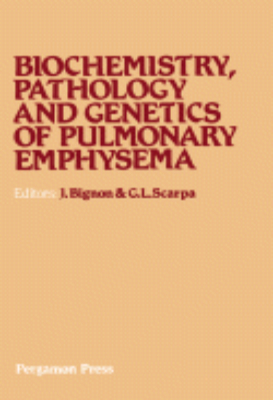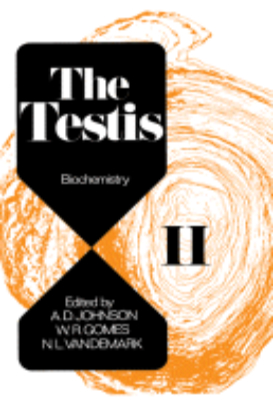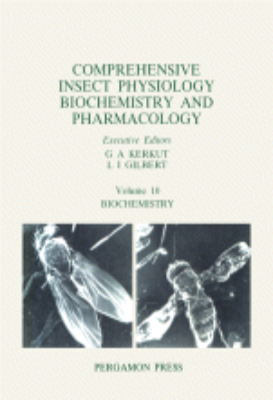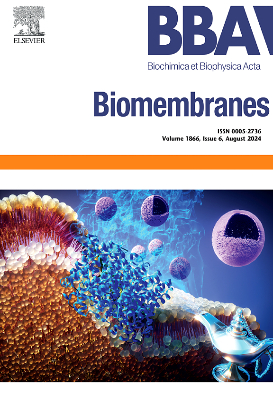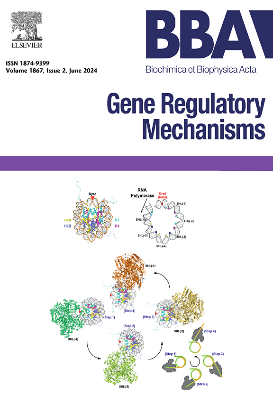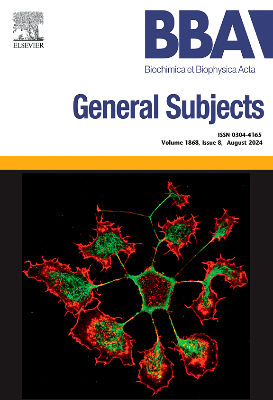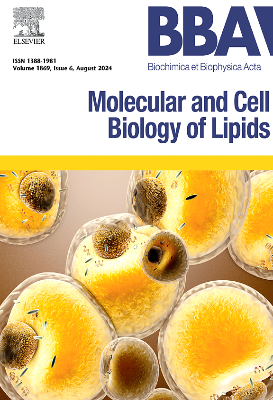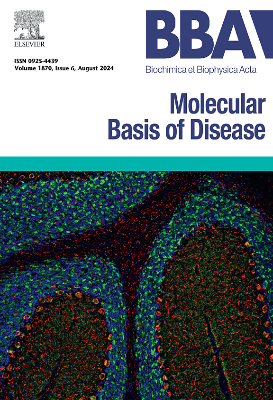E-Resources
Biochemistry of Metabolism
The Biochemistry of Plants: A Comprehensive Treatise, Volume 11: Biochemistry of Metabolism provides information pertinent to the chemical and biochemical aspects of metabolism. This book discusses the control mechanisms of metabolism. Organized into nine chapters, this volume begins with an overview of the history of biochemistry and discusses the developments in the kinetics of regulatory enzymes. This text then examines a theory that explains how subunit interactions modulate the rate of conversion of a substrate into a product. Other chapters consider some relation between cell-wall elongation and cell-wall charge density and explore the subcellular localization of the enzymes of glycolysis. This book discusses as well the regulation of glycolysis and the pentose phosphate pathway. The final chapter deals with the pathways of C1 metabolism that are of prime importance, as the synthesis of several cellular constituents depends directly or indirectly on folate metabolism. This book is a valuable resource for plant biochemists, neurobiochemists, molecular biologists, senior graduate students, and research workers.
Biochemistry of Milk Products
Biochemistry of milk products documents advances in the field and focuses on the two most active areas of research areas, which are starter cultures and enzymes for use in cheese and other foods, and factors influencing the functional properties of milk.The book covers the current thinking and research on the roles of proteinases and peptidases in the milk clotting process and in texture and flavour development during maturation of product. It also covers the protein engineering of enzymes and molecular biological manipulation of microorganisms, including the use of protein engineering to clarify the molecular basis of functional behavior and to manipulate protein properties in a defined and planned way.Biochemistry of milk products provides important reading for research workers, lecturers, graduates and final year undergraduates with interest in the practical applications of molecular biology, enzymology, and protein chemistry, not just in improving the quality and performance of dairy foods and ingredients but also in a much wider context.
Biochemistry of Parasites
Biochemistry of Parasites, Second Edition presents the biochemical aspects of parasitology. The topics covered in the book include inorganic substances; carbohydrate relationships of parasites; parasitic metabolism of carbohydrates and transport mechanisms; distribution of lipids in the bodies of parasites; and disturbances in the host's protein metabolism during parasitic infections. Parasitologists and biochemists will find the book interesting.
Biochemistry of Platelets
Biochemistry of Platelets is a comprehensive review of the biochemistry of platelets, with emphasis on the molecular basis for the various biological processes in which they participate. Topics range from stimulus-response coupling mechanisms to platelet contractile proteins, platelet membrane glycoproteins, and storage organelles in platelets and megakaryocytes. The expression and function of adhesive proteins on the platelet surface is also discussed. Comprised of 12 chapters, this book begins with a description of the morphological and metabolic responses to agonists, as well as the involvement of certain processes in the coupling of agonist-receptor interactions to platelet responses. The following chapter deals with platelet arachidonate metabolism and platelet-activating factor, focusing on the release of arachidonate from platelet lipid stores; pathways of platelet arachidonate metabolism and effects of arachidonate metabolites; and inhibition of platelet arachidonate metabolism by aspirin. The structure, function, and modification in disease of platelet membrane glycoproteins are then discussed, along with prothrombin activation on platelets and platelet regulation of thrombus formation. Secreted platelet proteins as markers for pathological disorders are also considered. This monograph is intended as a reference for investigators involved in platelet research as well as a source of information for those working in other areas of biological investigation.
Biochemistry of Smooth Muscle Contraction
This valuable resource provides a systematic account of the biochemistry of smooth muscle contraction. As a comprehensive guide to this rapidly growing area of research, it covers the structure and characteristic properties of contractile and regulatory proteins, with special emphasis on their predicted function in the live muscle. Also included in this book are intermediate filament proteins, and desmin and vimentin, whose function in smooth muscle is unknown; and several enzymes involved in the phosphorylation-dephosphorylation of contractile and other proteins.
Biochemistry of Taste and Olfaction
Biochemistry of Taste and Olfaction examines the biochemical aspects of taste and olfaction and their relevance to nutrition, medicine, and food science. More specifically, it considers the biological processes that influence dietary habits, nutritional status, and enjoyment of food, as well as other important social and biological phenomena. It also describes biochemical mechanisms at the peripheral receptor level in taste and olfaction, with emphasis on the role of the cell surface, along with neurotransmitters and other neurochemical aspects of the olfactory system. Organized into five sections comprised of 24 chapters, this book begins with an overview of biochemical approaches used in studying the phenomena of taste and olfaction. It then proceeds with a discussion of olfactory receptor mechanisms, the accessibility of odorant molecules to the receptors, the role of cilia in olfactory recognition, and the involvement of receptor proteins in vertebrate olfaction. Middle chapters focus on the chemosensation, major histocompatibility complex and olfactory receptors, taste receptor mechanisms, biochemistry of sugar reception in insects, intensity/time phenomena in sugar sweetness, and recognition of taste stimuli at the initial binding interaction. The reader is also introduced to the physicochemical principles of taste and olfaction, molecular mechanisms of transduction in chemoreception, biochemical mechanisms in vertebrate primary olfactory neurons, neurotransmitter biochemistry of the mammalian olfactory bulb, and chemical sensing by bacteria. Examples of chemical sensory systems are included. This book will be of interest to biochemists, physiologists, neurobiologists, neuroscientists, molecular biologists, food scientists, students, and specialists in psychology, neurophysiology, organic chemistry, and nutrition.
Biochemistry of the Amino Acids
Biochemistry of the Amino Acids, Second Edition, Volume II focuses on the trends in research on amino acids and biochemistry. Given considerations are incorporation of amino acids into proteins, amino acid sequences, and discovery of amino acids. The first part of the book deals with intermediary metabolism of amino acids. Particularly noted are alanine, aspartic, adenylosuccinic, hydroxyaspartic acids, and asparagine. The book also has discussions on glutamic acid, glutamine, glycine, serine, and sarcosine. The processes and syntheses involved in these acids are noted. Another part of the book focuses on the formation, degradation, reactions, and conversion of acids. The processes and experiments discussed are supported by numerical analysis, and the biosynthesis of acids in microorganisms is also considered. The book also notes some disorders of amino acid metabolism in humans. These disorders include cystinuria, glycinuria, ammonemia, prolinemia, maple syrup urine disease, and homocystinuria. Discussions focus on how these diseases develop and the symptoms associated with them. The book is a vital source of data for readers interested in the study of amino acids.
Biochemistry of the Eye
"A readable introduction to this difficult topic, this textbook provides information on the molecular structures and biochemical events that occur in the eye. With specific clinical examples, basic science is linked to clinical practice and helps students understand this challenging topic.General biochemistry is discussed in each chapter. Many examples of biochemical pathology and disease processes, such as age-related cataract formation and ocular diabetes, are described. Key Features. Well-illustrated content, featuring color inserts with 10 illustrations, shows visual aspects of biochemistry.. Each chapter features a general review of the subject matter prior to discussing ocular biochemistry.. Discussions of proteins that are either unique to the eye and/or have special functions in the eye, such as collagen's role in the structure of the cornea, emphasize the importance of these compounds and their many essential cellular and ocular functions.. Discussions of the nature and function of enzymes, in addition to descriptions of examples of specific enzymes found in the eye, highlight the manner in which many biochemical reactions occur in the eye is via enzyme catalysis.. A chapter on carbohydrates emphasizes the importance of the two roles of carbohydrates in ocular tissue: energy supply (nutrition) and as a source of extracellular structure.. An explanation of the many different kinds of lipids that exist in the eye features the most up-to-date material on tear film lipids and useful information on dietary Vitamin A requirements.. A chapter on hormones deals with the role of hormones in general and shows how hormones play roles in ocular functions, including the process of visual transduction as a hormonal function.. A thorough review of nucleic acid chemistry points out its role in molecular biological functions such as DNA replication, RNA transcription, and protein translation, as well as DNA mutations.. A chapter on neurochemistry provides an understanding of basic neurochemistry and how neurochemistry can explain the complex functions of the retina.. The immunochemistry chapter contains basic material on biochemical and cellular immunology, discussing immune privilege in the eye and the importance of immune reactions at the anterior segment.. A new chapter describes the biochemical pathology of four degenerative conditions (corneal ulcers, chemical burns, glaucoma, and cellular apoptosis) to help the clinician understand pathological processes and the time course of degenerative processes and methods of treatment.. A new chapter on Water and Ocular Fluids offers unique coverage of the functions of eye fluids and how drug companies must design drugs for the ocular surface, comparing the physical, chemical, and biological properties of water with fluids found in the eye."
Biochemistry of the Glycosidic Linkage: An Integrated View
Biochemistry of the Glycosidic Linkage: An Integrated View is a collection of papers presented at The Pan-American Association of Biochemical Societies Symposium, held in San Carlos de Bariloche, Argentina on November 8-11, 1971. This symposium is organized as a tribute to Luis F. Leloir and his contributions in the field glycosidic linkage. This book is divided into six sessions encompassing 57 chapters. The opening session discusses the role of biochemical mechanisms in the glycosidic linkage formation. The following sessions examine the metabolic functions of some disaccharides, such as trehalose, sucrose, glucose, and starch. These sessions also look into the biosynthesis, function, and properties of carbohydrates containing polymers. The discussion then shifts to the control of enzyme biosynthesis involved in the glycosidic linkage metabolism, with particular emphasis on alpha-amylase, lactose synthetase, phosphorylase, and neuraminidase enzymes. Another session is devoted to the regulatory mechanisms and control of glycogen metabolism. The concluding session covers the genetic analysis and biochemical characterization of the enzymes involved in the glycosidic linkage metabolism. Biochemists and carbohydrate researchers will find this text invaluable.
Biochemistry of Thermophily
Biochemistry of Thermophily covers the proceedings of a seminar held under the auspices of the U.S.-Japan Cooperative Science Program at the East-West Center in Honolulu, Hawaii on June 22-24, 1977. This seminar focuses on biochemistry of thermophilic microorganisms. It presents an achievement in the complex field of thermophiles and their unique properties. This book discusses the fatty acid composition in several strains of moderately and extremely thermophilic bacteria, the membrane and lipid components, the biosynthesis and function of -cyclohexyl fatty acids, and the influence of growth temperature and lipid state on lipid and protein distribution. It then presents the ecologic and genetic aspects of thermophilic bacteria, including their morphology, surface structure, and transfection. It also examines the function and thermostability of ribosomal proteins, polypeptides, and polyamines in thermophilic bacteria. Finally, the book discusses the thermostability of proteins, the effect of amino acid substitution on conformational stability of thermophile, the thermophilic enzymes, and the physiology of thermophilic bacteria. This book will be helpful to molecular and research biologists, teachers, and students who wish to expand their understanding on mechanisms of thermophilicity, thermostability, and thermophilic microorganisms.
Biochemistry of Vision
Biochemistry of Vision provides information pertinent to vision biochemistry. This book discusses the biochemical information derived primarily from studies on nonocular tissues and describes the biochemical reactions related to the function of the retina and pigmented epithelium. Organized into 16 chapters, this book begins with an overview of the visual system and the structure of the vertebrate eye. The text then proceeds with a discussion of photoreceptor, which has a highly membranous structure. Other chapters cover a brief discussion of several topics, including biomembranes, photochemistry, spectral properties of retinal isomers, and the photochemical properties of the chromophore of rhodopsin. This book discusses as well the properties and intramembrane disposition of rhodopsin. The final chapter deals with the biochemistry of photoreceptor disorders and summarizes the basic knowledge on neurotransmitters and electrophysiology in the retina. This book is intended for ophthalmologists and medical students who are interested in the molecular aspects of photoreceptor diseases.
Biochemistry Pathology and Genetics of Pulmonary Emphysema
Biochemistry, Pathology and Genetics of Pulmonary Emphysema documents the proceedings of an international symposium held in Sassari, Italy, 27-30 April 1980. Research on the origins of emphysema has acquired more importance than functional diagnostic studies. There are various hypotheses concerning the development of emphysema. Some cases of emphysema are linked to defects in metabolic functions of the vessels while others are linked to a disturbance in repair processes. The papers in this volume are organized into four sections. Section 1 contains studies on the pathology and biochemistry of lung connective tissue. Section 2 deals with animal models. Section 3 on proteases and antiproteases includes studies on the characteristics and identification of biological specimens, and alpha1-proteinase inhibitor. Section 4 takes up the risk factors and therapeutic approaches for lung disease. Other papers in the volume were presented during two roundtable discussions on the biochemistry of connective tissue components in emphysema and therapeutic approaches.
Biochemistry: 1970
The Testis, Volume II: Biochemistry focuses on the study of the biochemistry of mammalian testis. Composed of contributions of authors, the book starts with the endocrinology of the testis. Topics covered include testicular estrogens and androgens; the effect of age on testicular steroidogenesis; and endocrine regulation of spermatogenesis. The compilation also presents a histochemical analysis of the localization of testicular enzymes. Covered are histochemistry; enzymes of the fetal and mature testis; and the factors affecting testicular enzymes. The text notes as well that blood flow, hormones, nutrition, age, and temperature can affect testicular lipids and that the testis has testicular proteins and nucleic acids. The selection also outlines the growth and development of mammalian testis, and then ends with the discussions on hormonal regulation; chemical constituents; and testicular development, structure, and spermatogenesis of invertebrate testes. The compilation will best serve the interest of readers interested in studying the structure and functions of the testis.
Biochemistry: 1977
Biochemistry: The Chemical Reactions of Living Cells is a 16-chapter reference source on chemical structures and reactions of living cells. The first three chapters of this book contain introductory material on cell structure, molecular architecture, and energetic. The subsequent chapters examine the allosteric effect of the binding structures of oligomeric enzymes, microtubules, viruses, and muscle. These chapters also describe the structures and chemical properties of membranes and of the surrounding cell coats. The discussions then shift to the general properties of enzymes, the kinetics of chemical reactions, and the various mechanisms employed in enzymatic catalysis. Considerable chapters are devoted to the reaction sequences found in metabolism. These chapters particularly examine the carbohydrate and lipid metabolism; photosynthesis; and biosynthesis and catabolism of an enormous number of nitrogenous compounds. The final chapters highlight the genetic and hormonal control of metabolism, development, and brain function. Biochemistry teachers and students will find this book of great value.
Biochemistry: 1985
The underlying theme of this volume is the understanding of the molecules and processes important in the primary metabolism of insects. The 19 chapters provide both rich historical perspectives and timely reviews of current research, as well as showing the extent of progress to be expected in the near future, including the application of advanced techniques now used for the study of microbial and mammalian processes. The major themes of metabolism, proteins and nucleic acids, and biochemical events in the nervous system each have several chapters devoted to them, but specific topics such as pigments, toxins, and aging are also covered in detail. This extensive volume is therefore an invaluable source of information not only for entomologists but also for all scientists whose work involves insect biochemistry, including zoologists, biochemists, and molecular biologists and geneticists.
Biogenesis of Plant Cell Wall Polysaccharides
Biogenesis of Plant Cell Wall Polysaccharides contains the proceedings of a 1972 symposium on Biogenesis of Plant Cell Wall Polysaccharides held at the 164th National Meeting of the American Chemical Society, New York, New York. The symposium focuses on a broad range of interest from structural to functional aspects of cell wall polysaccharide biosynthesis in algae as well as in higher plants. Organized into 17 chapters, this book details the progress and understanding regarding the biosynthesis of cell wall components and the assembly of these components in the wall. It encompasses topics on cell wall polysaccharides, UDP-D-glucuronic acid pyrophosphorylase, and D-xylose. This reference also tackles the UDP-D-glucuronic acid, L-arabinose, D-apiose, and carbohydrate polymers. Furthermore, it explains other topics, such as on extensin, hydroxyproline-rich glycoprotein, cellulose, and polygalacturonic acid.
Biogeochemistry of Trace Elements in the Rhizosphere
"The rhizosphere in soil environments refers to the narrow zone of soil influenced by the root and exudates. Microbial populations in the rhizosphere can be 10 - 100 times larger than the populations in the bulk soil. Therefore, the rhizosphere is bathed in root exudates and microbial metabolites and the chemistry and biology at the soil-root interface is governed by biotic (plant roots, microbes) and abiotic (physical and chemical) interactions. The research on biotic and abiotic interactions in the rhizosphere should, thus, be an issue of intense interest for years to come. This book, which consists of 15 chapters, addresses a variety of issues on fundamentals of microscopic levels and the impact on food chain contamination and the terrestrial ecosystem. It is an essential reference work for chemists and biologists studying environmental systems, as well as earth, soil and environmental scientists. Key Features. 15 chapter book, which addresses a variety of issues on fundamentals of microscopic levels and the impact on food chain contamination and the terrestrial ecosystem"
Biological Approaches and Evolutionary Trends in Plants
Biological Approaches and Evolutionary Trends in Plants is a collection of papers presented at the Fourth International Symposium of Plant Biosystematics held on July 10-14, 1989 in Kyoto, Japan. Contributors, some are world's leading plant biologists, discuss the findings in evolutionary biology and issues in plant biosystematics in light of the evidence and ideas brought forward at various levels of biological organization, from molecule to cell, individual, population, species, and community levels. This volume is organized into four sections encompassing 22 chapters and begins with an overview of discoveries concerning parapatric differentiation of weed populations, including adaptive evolution in herbicide resistant biotypes and complex evolutionary patterns in weed-crop complexes of various groups. The next section explores molecular approaches in plant biosystematics, focusing on amino acid sequencing of proteins; restriction-site variations of cpDNA, mitDNA, rDNA, etc.; and chromosome-banding patterns revealed by differential staining. The discussion shifts to a wave of research in plant population biology and evolutionary ecology since the 1970s and its impact on biology and biosystematics. The book considers various aspects of reproductive biology and evolutionary changes in significant reproductive parameters and attempts to demographically quantify these parameters. The final chapter is devoted to the use of functional phylogenetic systematics for predictive ecology. This book will be of interest to plant biologists and scientists and researchers in fields such as biochemistry, botany, microbiology, ecology, and evolutionary biology.

